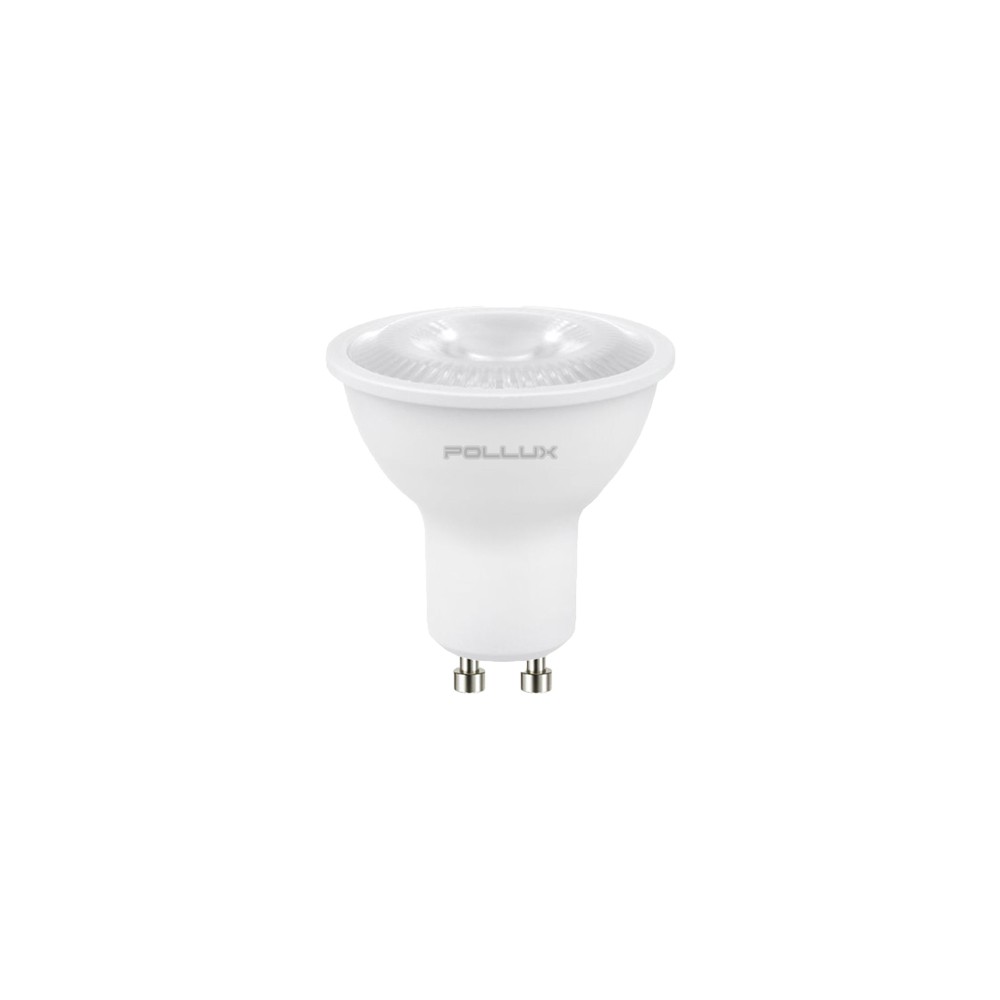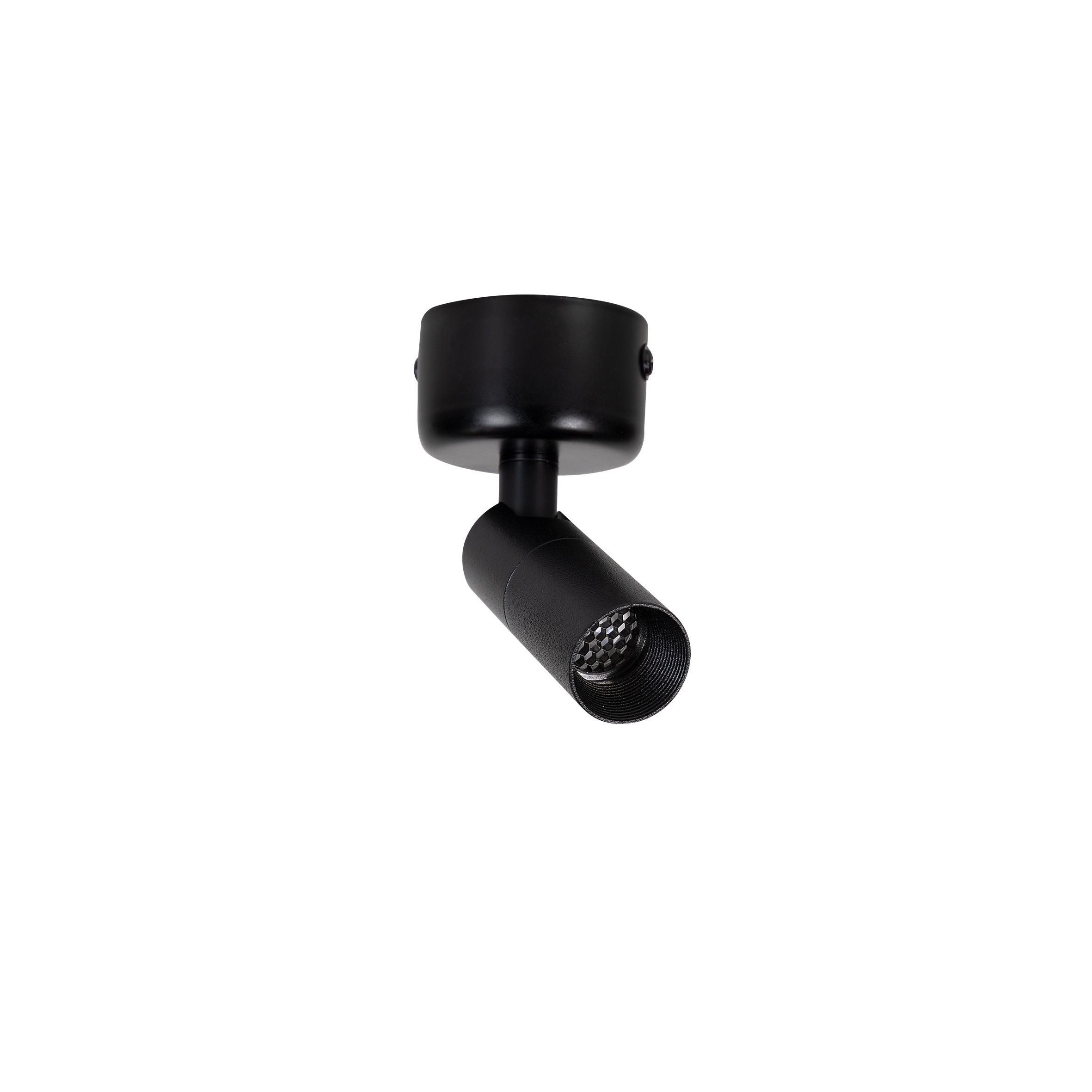A light-emitting diode (LED) is a semiconductor component that emits light when current passes through it. When particles carrying electric current (called electrons and holes) combine in a semiconductor material, light is produced. LEDs are small LED chip lights that are easily installed in a circuit. But LED bulbs unlike incandescent lamps, do not burn easily, consume less power and do not generate much heat. what is LED chip?
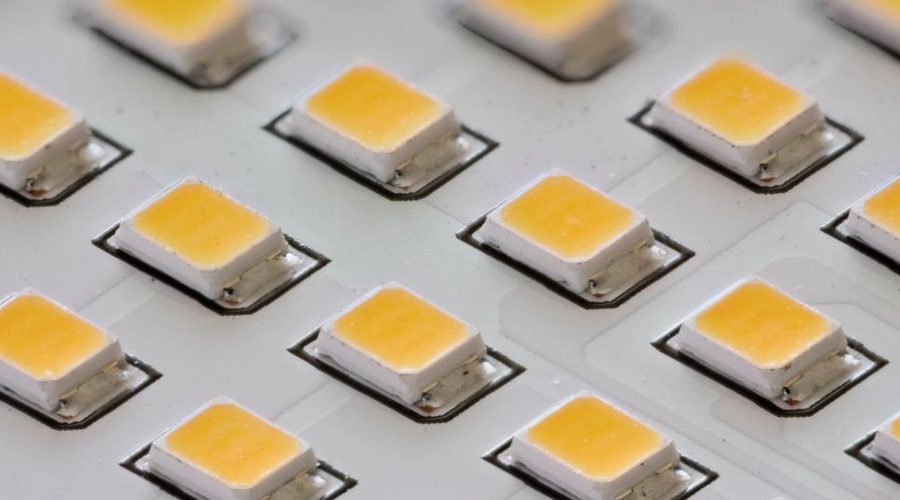
what is led? LEDs produce light due to the movement of electrons inside the semiconductor material and have a life as long as standard transistors. benefits of LED lighting is their lifespan LED lifespan is thousands of hours more than incandescent lamps. Because of these advantages, LEDs are one of the most popular technologies for lighting especially indoor lighting.
Each LED consists of several components, the most important of which is the LED chip, the LED light-emitting chip, the main component of the LED, also known as a P-N junction. Its main task is to convert electrical energy into light, and the main material of the high power LED chip is silicon crystal. The LED chip light has a semiconductor wafer that consists of two layers of silicon crystal bonded together, one layer is a P-type semiconductor in which holes predominate, and the other layer is an N-type semiconductor in which Electrons are in the majority.
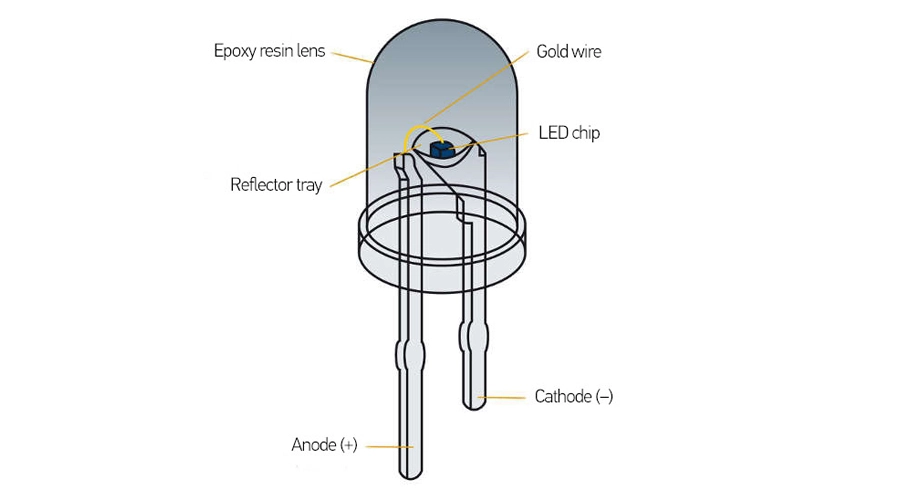
When these two semiconductors are connected, a P-N junction is formed between them. When a current is applied through the wire to the wafer, the electrons are driven into the P region, where the electrons and holes recombine and energy is then emitted in the form of photons. This is the principle of LED light emission. The wavelength of light emitted, which determines the colour of the light, is determined by the type of material that forms the P-N junction. To complete the answer to the question of what is an LED chip, we will examine the LED chip types.
led lights flickering
what are led lights flickering? Blinking occurs when the frequency of the light output from the lamp is continuously variable. When the power supply turns the alternating current into direct current and this current is sent to the LED light source, the existence of any problem in the direct alternating current conversion process can cause blinking. In an article published by the Association of Electrical and Electronics Engineers, it is written that the eyes can have destructive effects such as epilepsy, headache and restlessness in people by hitting the lights. It will also cause invisible blinks including headache eyes.
A quality LED driver can prevent such problems, on the other hand, the low quality of the driver will cause the conversion of alternating current to direct current not to be done well, and finally, we will see the light flashing.
Led chip types
LEDs are generally divided into three categories: DIP LED, SMD LED, and COB LED:
DIP LEDs
In the DIP LED package, the chip is inside a hard plastic head, these DIP LEDs have 2 metal bases that are parallel to each other. Although some products today still use this design, the light output and CRI are low compared to newer LED chip lights. This type of LED is mostly used as signal lights and decorative works. Today, more advanced models of high power LED chips are available for home, commercial and industrial use.
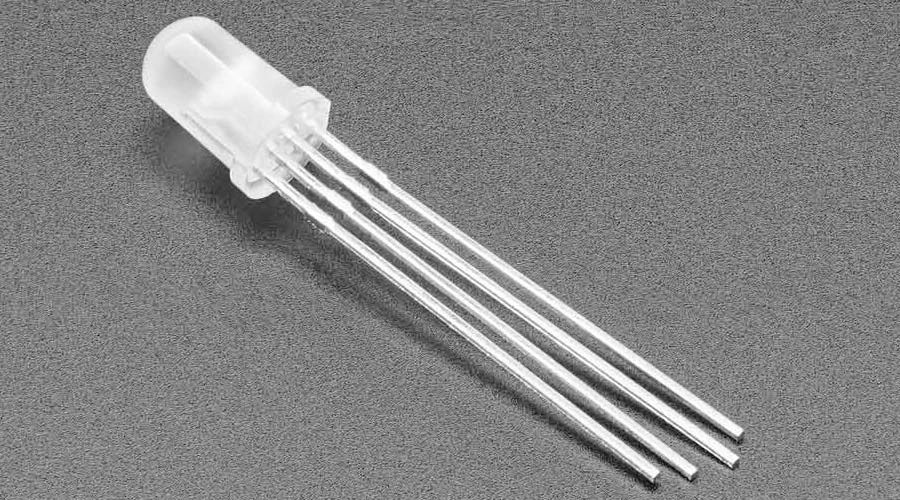
COB LEDs
The term COB or chip on board refers to the concept of placing several chips (usually 9 or more) on an aluminium substrate. In this high power LED chip model, the chips are placed directly on an aluminium substrate and form an LED light. These LEDs are classified as lighting modules.
This design takes up less space and provides maximum lighting potential. This technology eliminates the concept of bases and soldering, thus reducing the time of the assembly process by almost a third and reducing the cost. LED chip types are used in high-light fixtures such as industrial lights, street lights, parking lots and open spaces that require a large illumination area.
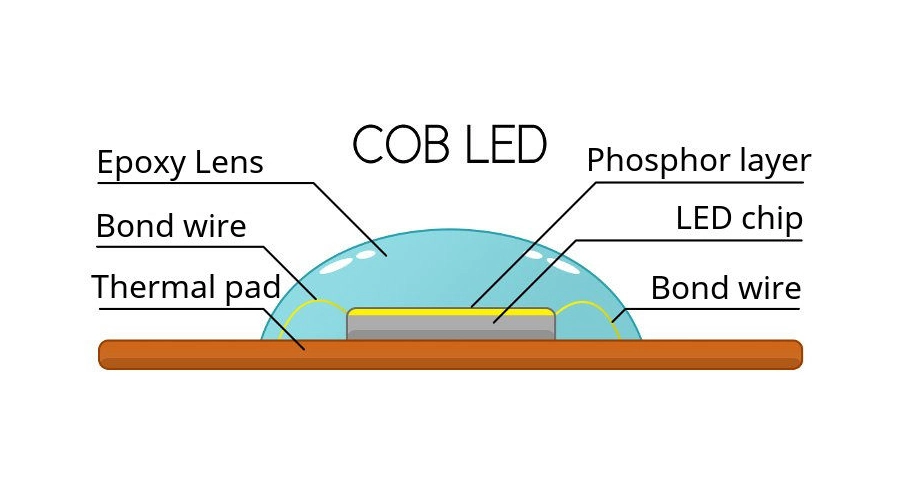
SMD-led chip light
smd are the main development after DIP LEDs. Compared to DIP LEDs, some benefits of led lighting with smd chips are their higher light efficiency and lower power consumption. Compared to DIP LEDs, they have a smaller design, lower height, longer life, reduced energy consumption by up to 75%, and lower maintenance costs.
What is the difference between LED chip and LED package types such as 3528, 5050 and 2835?
When searching for LED products, you may come across different 4-digit names for LED types. When you first come across these codes, you may be very confused about what they mean! Read on to learn about the differences between common LED types and what to look out for.
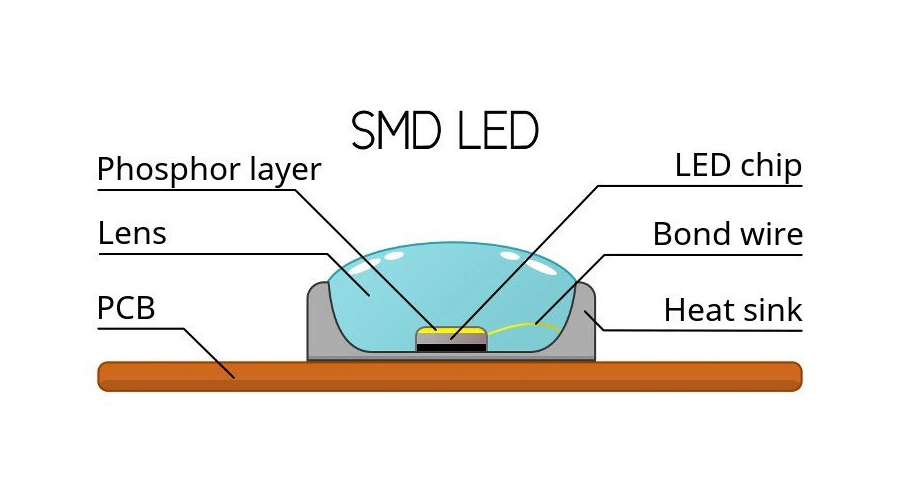
First of all, what is an LED package?
An LED lamp usually consists of several LEDs mounted on a board, usually characterized by specific density numbers such as 60 LEDs per meter for LED strips. Each of these LEDs has a characteristic called a package. The LED package is a plastic case that contains an LED chip and a phosphor.
The LED chip light is a semiconductor material that emits light (blue light) and the phosphor material converts some of this light into green and red wavelengths. This mixture creates white light that is emitted from the LED package.
Types of LED packages
All LED packages are marked with four-digit codes such as 3528, 5050, 3030 and 2835. The first two digits refer to the width of the package and the last two digits refer to its length in tenths of millimetres. For example, a 3528 LED package is 3.5 mm wide and 2.8 mm long. In general, a larger package can handle more power.

This is because it has more surface area to dissipate heat. However, note that this rule does not always hold. For example, the 2835 package has the same surface area dimensions as the 3528 package, but because of the higher technology, it allows for much higher power levels. The packaging material plays a huge role in the amount of heat dissipation in an LED (eg PPA vs. PCT vs. Ceramic).
1st generation LEDs: 3528 and 5050
The first generation of surface mount style LEDs were available in 3528 and 5050 sizes. The 3528 typically contained one 20mA (approximately 0.06W) LED chip and the 5050 typically contained three 20mA (approximately 0.2W) LED chips. Therefore, a 5050 LED package has 3 times the power capacity compared to a 3528 package.
In addition to the higher capacity, because the 5050 package usually has enough space for three different LED chips, it is a popular way to package RGB LEDs that require different colours. Of course, they can also be used to package single-colour white LEDs, in which three blue LED chips are used. Of course, there are RGB chips with the 3528 package, but they are mostly found in monochrome.
LED generation 2: 2835 and 5730
The second generation of LED types saw an increase in power density. A 2835 LED typically has a current of 60mA (0.2W) and a 5730 LED has a current of 150mA (0.5W). Due to advances in LED chip technology and improved package thermal design, power levels at the LED surface have increased significantly in this generation.
Some of the power levels of these LEDs exceed the overall thermal capacity of the LED lamp system because the thermal dissipation of the printed circuit board is limited due to the material and lack of a heat sink.
Other types of LED packages
The 3014 package is another type of LED package that you may come across. These LEDs are designed to draw low power (approximately 20 mA each) and are typically used in LCD backlight applications where a high number of LEDs is required for uniform illumination. Similarly, there are LED strip products that use these LEDs diagonally at high density to create a uniform linear light source.
3030 LED package is also used on LED strips. Many of these products benefit from a symmetrical circular illumination surface because they can be paired with secondary optics and lenses. 3030 LEDs are typically designed to operate at 300mA or more (up to 1.0W) but are not typically used in full-capacity LED strip products due to thermal concerns.
3528 chip
As for the main types of SMD LEDs, the most common in the market is 3528. This LED was one of the first LEDs that appeared in the market and is characterized by a power between 6 and 8 lumens, a consumption of 0.20 watts and its characteristics. 3528 SMD is a 3.5mm x 2.8mm chip smaller than the 5050 SMD LED strip. You'll often find 3528 chips on 12V LED strips.
5050 chip
SMD 5050 LEDs provide an output between 16 and 22 lumens. They are among the first chips to produce higher power and are therefore suitable for general lighting needs. With dimensions of 50x50mm, it is bigger than 3528 SMD. These dimensions mean that each 5050 SMD is large enough to hold four individual LED chips.
5730 chip
The recently developed 5730 LEDs provide good illumination at low power consumption and are therefore very popular. These SMD LEDs are suitable for use in places where high lumens are needed.
2835 chip
Finally, SMD 2835 and 3014 LEDs have the longest lifespan and best performance due to the presence of a heat sink inside them that prevents the source from overheating. The 2835 chip is 2.8 x 3.5 mm in size. This type is commonly used on LED strips for both lighting and purely decorative purposes.
3014 chip
A recent development, SMD 3014 LED chips are much smaller and much more efficient than many previous SMD models. The smaller size of the diodes (just 3.0 mm x 1.4 mm) means that more of them can be placed along the length of the PCB strip – providing more brightness without requiring more power.
